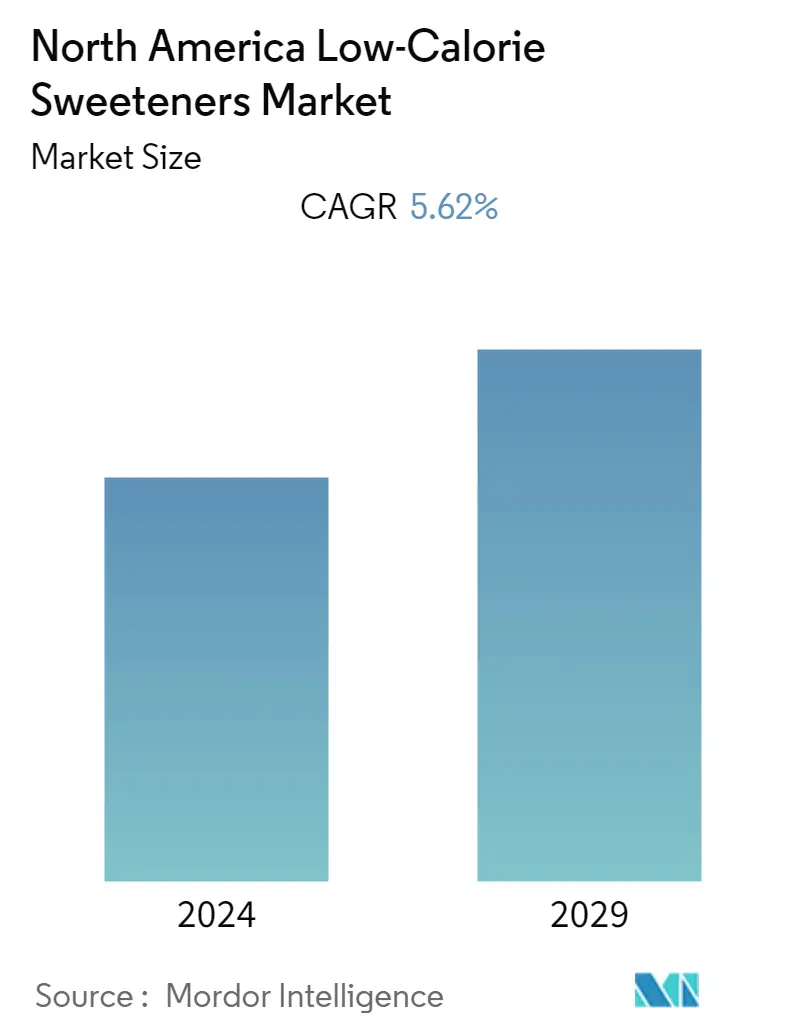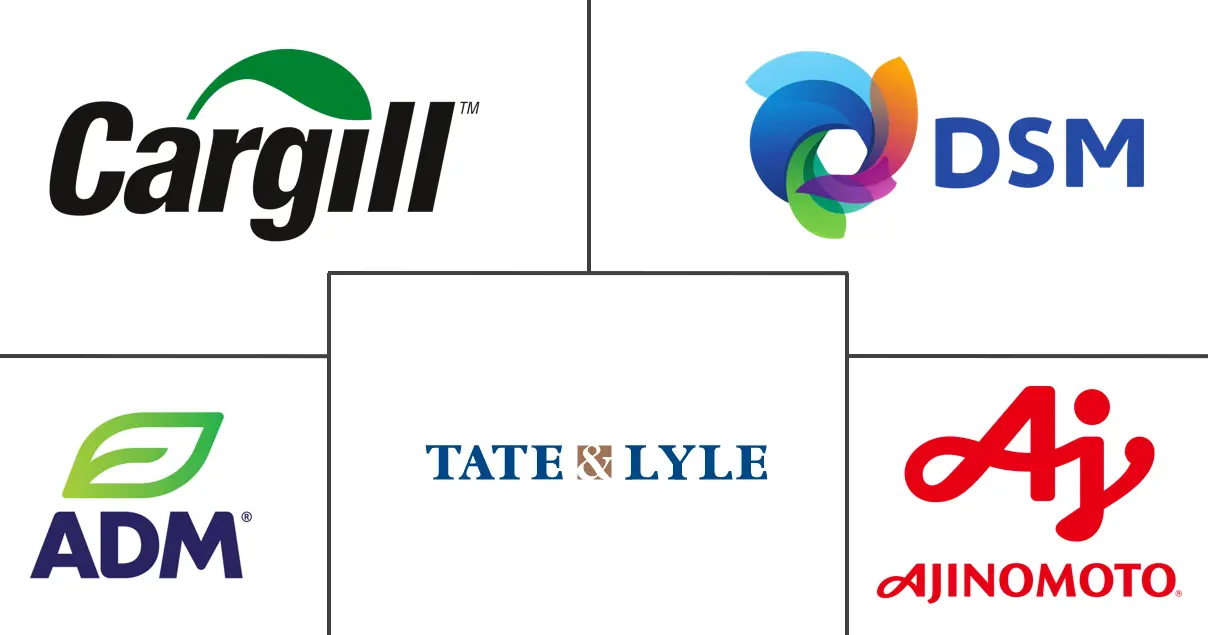Market Size of North America Low-Calorie Sweeteners Industry

| Study Period | 2019 - 2029 |
| Base Year For Estimation | 2023 |
| Forecast Data Period | 2024 - 2029 |
| Historical Data Period | 2019 - 2022 |
| CAGR | 5.62 % |
| Market Concentration | Low |
Major Players
*Disclaimer: Major Players sorted in no particular order |
North America Low-Calorie Sweetener Market Analysis
The North America low-calorie sweeteners market is projected to grow with a CAGR of 5.62% during the forecast period (2020 - 2025).
- North America holds some of the largest economies of the global market, especially the United States and Canada. The consumers are increasingly inclining towards healthy diets in the form of low-calorific food and beverages. Thus, significantly driving the market.
- By Application, the beverage segment is widely driving the market studied owing to consumer demand for diet or low-calorie drinks such as coke, and other soft drinks. Recently, sucralose replaced aspartame in the soft drink application.
- The dominance of global players in the region forms a competitive market. Moreover, the companies are also investing in research and development in order to satiate the surging demand and generate higher revenue.
North America Low-Calorie Sweetener Industry Segmentation
North America low-calorie sweeteners market is segmented by source, type, application and geography. On the basis of source, the market is segmented into natural and synthetic. On the basis of product types, the market is segmented into sucralose, saccharin, aspartame, neotame, advantam, acesulfame potassium, stevia, and others. By application, the market is segmented into food, beverage, pharmaceuticals, others. The food segment is further classified into dairy and frozen foods, confectionery, bakery, others. Additionally, on the basis of geography, the study provides an analysis of the low-calorie sweetener market in the emerging and established markets across the region, including the United States, Canada, Mexico, and rest of North America.
North America Low-Calorie Sweeteners Market Size Summary
The North America low-calorie sweeteners market is experiencing significant growth, driven by the increasing consumer preference for healthier diets and low-calorie food and beverages. This trend is particularly evident in the beverage segment, where there is a rising demand for diet drinks, such as those using sucralose as a replacement for aspartame. The market is characterized by the presence of major global players who are actively investing in research and development to meet the growing demand and enhance their revenue streams. The approval of sweeteners like aspartame by the FDA further boosts consumer confidence, contributing to its widespread application in various food and beverage sectors, including bakery and confectionery.
In response to the demand for healthier lifestyle choices, there is a notable shift towards plant-based zero-calorie sweeteners in the United States. This has led to initiatives such as the joint venture between Cargill and Royal DSM, which focuses on producing stevia sweeteners at a commercial scale. The market is dominated by key players like Cargill Incorporated, DSM, Ajinomoto, and Tate & Lyle, who are employing strategies such as product innovation and partnerships to strengthen their market position. These efforts are exemplified by collaborations aimed at producing sustainable and cost-effective sweetening solutions, which are driving the market's expansion in North America.
North America Low-Calorie Sweeteners Market Size - Table of Contents
-
1. MARKET DYNAMICS
-
1.1 Market Drivers
-
1.2 Market Restraints
-
1.3 Porter's Five Forces Analysis
-
1.3.1 Threat of New Entrants
-
1.3.2 Bargaining Power of Buyers/Consumers
-
1.3.3 Bargaining Power of Suppliers
-
1.3.4 Threat of Substitute Products
-
1.3.5 Intensity of Competitive Rivalry
-
-
-
2. MARKET SEGMENTATION
-
2.1 By Source
-
2.1.1 Natural
-
2.1.2 Synthetic
-
-
2.2 By Type
-
2.2.1 Sucralose
-
2.2.2 Saccharin
-
2.2.3 Aspartame
-
2.2.4 Neotame
-
2.2.5 Advantam
-
2.2.6 Acesulfame Potassium
-
2.2.7 Stevia
-
2.2.8 Others
-
-
2.3 By Application
-
2.3.1 Food
-
2.3.1.1 Dairy and Frozen Foods
-
2.3.1.2 Confectionery
-
2.3.1.3 Bakery
-
2.3.1.4 Others
-
-
2.3.2 Beverage
-
2.3.3 Pharmaceuticals
-
2.3.4 Others
-
-
2.4 Geography
-
2.4.1 United States
-
2.4.2 Canada
-
2.4.3 Mexico
-
2.4.4 Rest of North America
-
-
North America Low-Calorie Sweeteners Market Size FAQs
What is the current North America Low-Calorie Sweeteners Market size?
The North America Low-Calorie Sweeteners Market is projected to register a CAGR of 5.62% during the forecast period (2024-2029)
Who are the key players in North America Low-Calorie Sweeteners Market?
Cargill, Incorporated, Tate & Lyle PLC, Archer Daniels Midland Company, Ajinomoto Health & Nutrition North America, Inc. and Koninklijke DSM N.V. are the major companies operating in the North America Low-Calorie Sweeteners Market.

